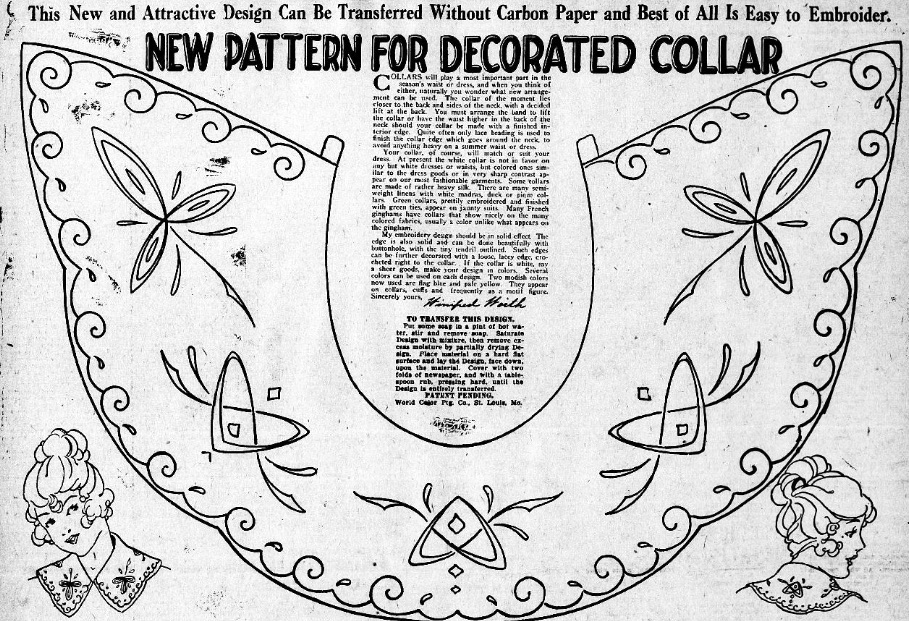
Patterns for decorated collars were published in numerous newspapers in the early 1900s. The collars were part of the fashion and even a social symbol, with certain colors being more popular than others.
New Pattern For Decorated Collar

Text reads:
Collars will play a most important part in the season’s waist or dress, and when you think of either, naturally you wonder what new arrangement can be used. the collar of the moment lies closer to the back and sides of the neck, with a decided lift at the back. you must arrange the band to lift the collar or have the waist higher in the back of the neck should your collar be made with a finished interior edge. Quite often only lace beading is used to finish the collar edge with goes around the neck, to avoid anything heavy on a summer waist or dress.
Your collar, of course, will match or suit your dress. At present the white collar is not in favor on any but white dresses or waists, but colored ones similar to the dress goods or in very sharp contrast appear on our most fashionable garments. Some collars are made of rather heavy silk. There are many semi-weight linens with white madras, duck or pique collars. Green collars, prettily embroidered and finished with green ties, appear on jaunty suits. Many French ginghams have collars that show nicely on the many colored fabrics, usually a color unlike what appears on the gingham.
My embroidery design should be in solid effect. The edge is also solid and can be done beautifully with buttonhole, with the tiny tendril outlined. Such edges can be further decorated with a loose, lacey edge, crocheted right to the collar. If the collar is white, say a sheer goods, make your design in colors. Several colors can be used on each design. Two modish colors now are flag blue and pale yellow. They appear on collars, cuffs and frequently as a motif figure.
Source: Ottumwa semi-weekly courier. (Ottumwa, Iowa), 02 April 1918.

